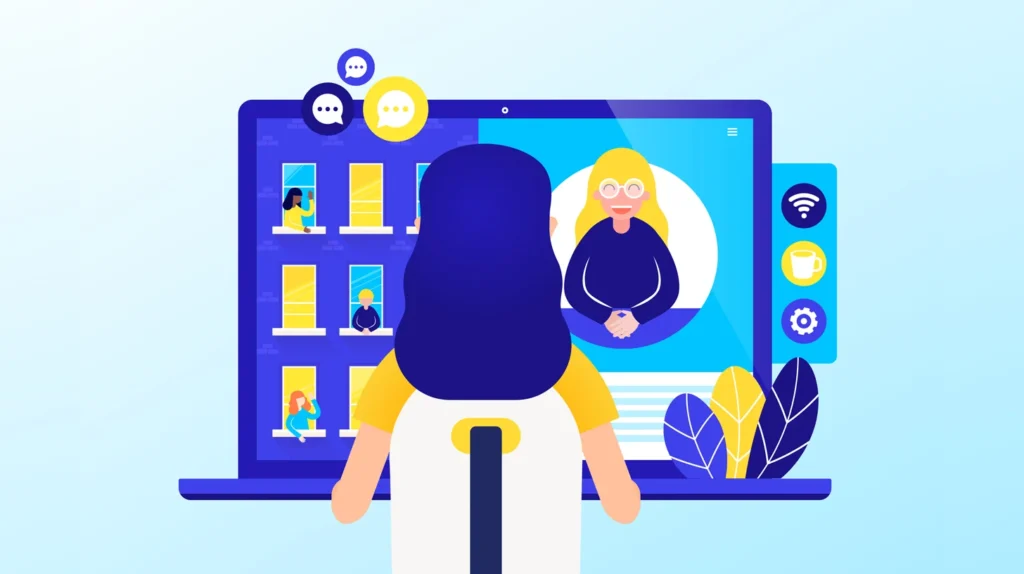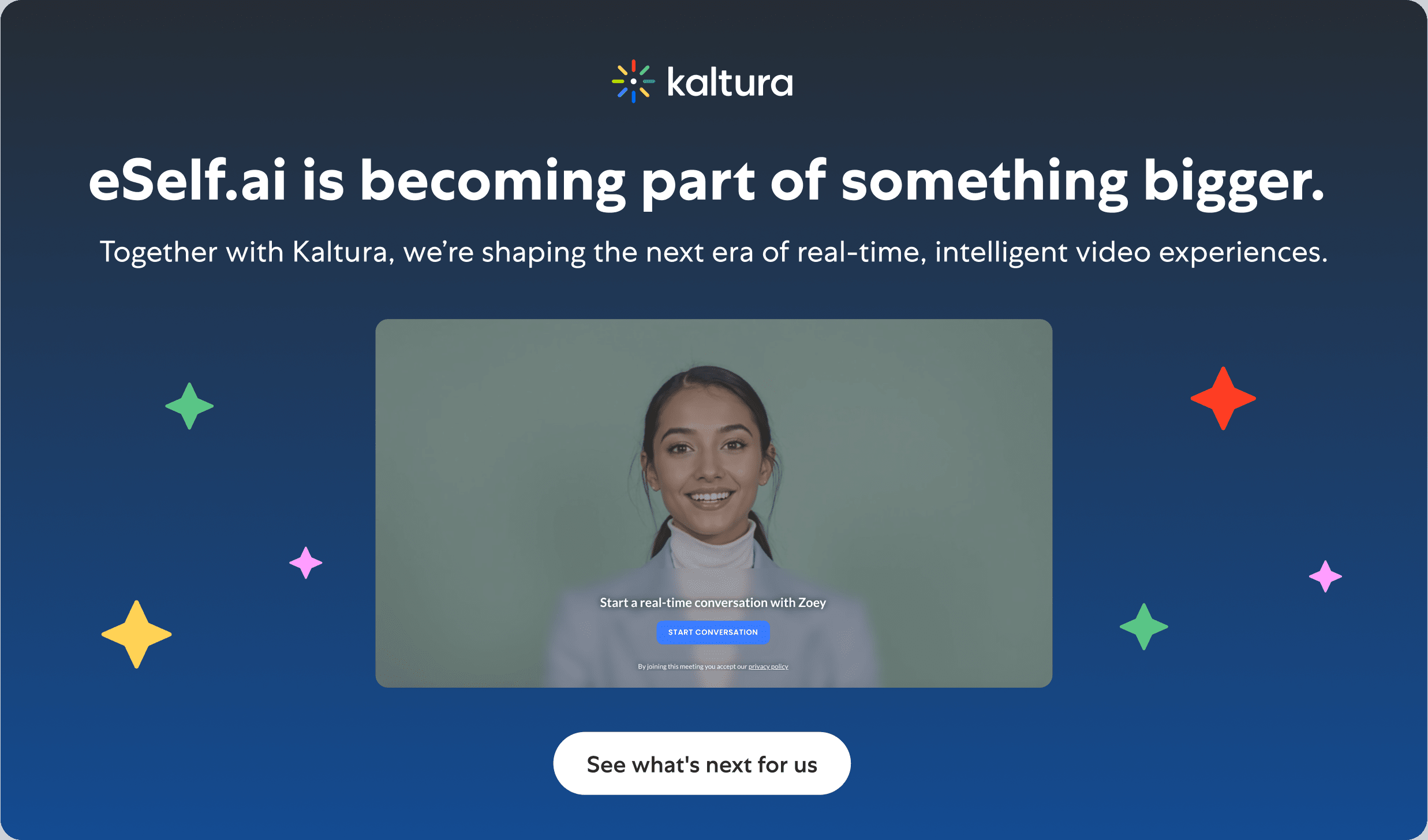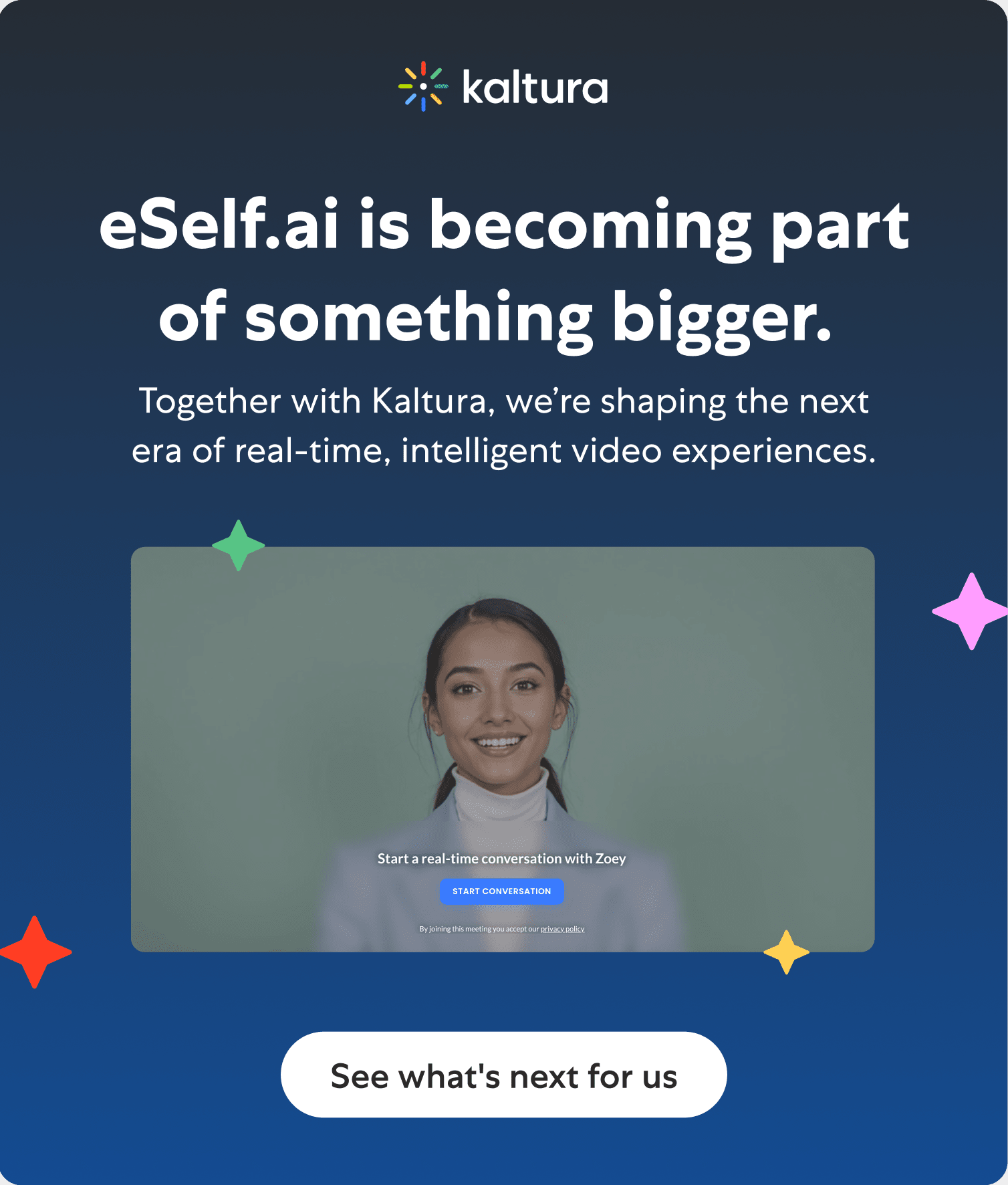In the digital age, customer service is transforming remarkably, with video based customer service emerging as a game-changer. This innovative approach leverages the power of visual communication to bridge the gap between businesses and consumers, creating more personal and engaging experiences.
Moving face-to-face interaction online, many companies have changed how customers interact and trust each other and enhanced problem-solving. This change is establishing fresh benchmarks for fast, direct, and not to mention, gratifying assistance and has coronated the future of customer service.
What Is Video Customer Service and Why It Matters
Video Customer Service: Definition and How It Works
Video customer service is a modern support solution that leverages live and pre-recorded video to provide faster, clearer, and more human customer interactions. Instead of relying solely on text or voice communication, this approach adds a visual layer to support, allowing businesses to solve problems more effectively, demonstrate solutions in real time, and create stronger customer connections.
- Live video chats: Instant face-to-face problem-solving for complex issues
- Asynchronous video support: On-demand, pre-recorded solutions for common queries
- AI-powered video responses: Personalized, automated assistance using advanced algorithms
- Interactive tutorials: Engaging, step-by-step guidance for product usage
- Video knowledge bases: Comprehensive, searchable libraries of visual support content
The Evolution from Phone and Chat to Video
Traditional support channels like phone calls and live chat often lack visual context, leading to miscommunication and longer resolution times. As customer expectations evolve, video has emerged as the next frontier in digital support—bridging the gap between self-service and human interaction.
Video enables:
- More empathetic communication through facial expressions and tone
- Easier product demonstrations and visual troubleshooting
- Greater engagement, especially among digital-native customers
By moving from text-heavy to visually rich experiences, businesses can improve satisfaction, loyalty, and customer understanding—all while streamlining internal support workflows.
Benefits of Video in Customer Support
Video-based customer support offers a dynamic upgrade to traditional service methods by combining visual clarity with human connection. It empowers businesses to resolve issues faster, build trust, and enhance the overall customer experience. Below are the core benefits:
- Builds Trust Through Face-to-Face Interaction
Video enables real-time visual communication, creating stronger emotional connections between agents and customers. This human touch boosts confidence and loyalty. - Increases Speed and Resolution Accuracy
Visual demonstrations reduce misunderstandings common in text-based channels. Complex issues like setup or troubleshooting are solved faster with fewer follow-ups. - Delivers Cost-Effective Solutions
By shortening average handle times and reducing repeated contacts, video support helps lower operational costs and limits the need for in-person service visits. - Enhances Personalization at Scale
Whether delivered live or through AI-powered responses, video makes support more tailored, engaging, and relevant to the user’s needs. - Improves Customer Satisfaction (CSAT)
Video support has been shown to increase customer satisfaction by as much as 17% compared to traditional channels, thanks to clearer communication and faster problem-solving.
Key Performance Metrics: Traditional vs. Video Support
Companies adopting video-based customer support often report noticeable improvements across key service metrics. While results vary by industry and implementation, video support consistently enhances efficiency, satisfaction, and customer retention.
| Metric | Traditional Support | Video Support |
| Customer Satisfaction | 75% | 92% |
| First Contact Resolution | 65% | 85% |
| Average Handle Time | 12 minutes | 8 minutes |
| Customer Retention Rate | 70% | 88% |
Note: Actual performance may vary by industry, support team maturity, and implementation quality. Metrics are based on internal benchmarks and third-party studies from sources like Zendesk, HubSpot, and customer experience research.
The table above illustrates video based support’s significant improvements across key performance indicators, showcasing its transformative impact on customer service effectiveness and efficiency. These metrics underscore the potential of video support to revolutionize customer service operations and enhance overall business performance.
Use Cases: When to Use Video in Customer Service
Video-based customer service can be applied in a variety of high-impact scenarios where visual communication delivers better clarity, faster resolution, and a more personalized experience. Below are the key use cases where video adds the most value:
Troubleshooting Complex Issues
When customers face technical problems or product malfunctions, video allows support agents to guide them visually through each step. This method drastically reduces the risk of miscommunication common in email or chat-based support, leading to faster resolutions and fewer repeat contacts.
Benefits:
- Clear visual diagnostics and solutions
- Reduced ticket volume through accurate fixes
- Fewer escalations and returns
Product Onboarding and Demos
Welcoming new customers with video onboarding enhances their first experience with your product. Step-by-step walkthroughs help them understand features and functionality faster, boosting confidence and early engagement.
Benefits:
- Higher product adoption rates
- Reduced onboarding friction
- Stronger first impressions that foster loyalty
Handling Shipping or Billing Disputes
Explaining billing charges or shipment tracking can be confusing via text. Video support enables agents to visually show billing breakdowns, demonstrate how to track packages, or clarify refund timelines — resulting in clearer communication and reduced frustration.
Benefits:
- Faster resolution of sensitive issues
- Increased transparency
- Improved trust in brand communication
Upselling or Retaining Premium Customers
Video is a powerful tool for maintaining high-value customer relationships. Personalized video check-ins, loyalty program explanations, or exclusive product previews can help upsell services and reduce churn.
Benefits:
- Deeper customer-business connection
- Higher customer lifetime value
- Increased retention of premium accounts
By using video strategically in these key service areas, businesses not only improve issue resolution but also strengthen customer satisfaction, build brand loyalty, and enhance support efficiency across the board.
Best Practices for Implementing Video Customer Support
To successfully integrate video into your customer service strategy, follow these best practices:
- Choose the Right Video Platform
Select a reliable, user-friendly video solution that integrates smoothly with your existing support stack. Look for features like high-resolution video, screen sharing, multi-device support, and strong data security to ensure accessibility and trust. - Train Support Teams Thoroughly
Equip agents with the skills they need to succeed in video interactions. Focus on:
- Building a strong virtual presence
- Mastering non-verbal cues and visual communication
- Guiding customers through complex issues step-by-step
- Practicing empathy and professionalism on camera
- Define Clear Usage Guidelines
Establish when and how video should be used within the customer journey. Create playbooks that define scenarios best suited for video (e.g., product setup, high-stakes disputes), and ensure consistent application across support teams. - Integrate Video into Your Omnichannel Strategy
Make video support a seamless part of your customer journey. Allow users to move fluidly between chat, phone, and video, and use intelligent routing to direct complex or high-value queries to video-enabled agents. - Monitor Performance and Optimize Continuously
Track metrics such as:
- First contact resolution (FCR)
- Average handle time (AHT)
- Customer satisfaction (CSAT)
- Agent productivity
Collect feedback regularly to refine processes and improve the overall video support experience.
Next Step: Scalable, AI-Powered Video Support
After building the foundation for effective video-based support, the next innovative step is choosing a platform that brings your strategy to life — with intelligence, automation, and scale. That’s where eSelf AI comes in.
eSelf AI Video Chatbot solution lets you deliver personalized, face-to-face service through human-like AI avatars that operate 24/7, speak multiple languages, and adapt to your customers’ needs — without requiring live agents.
With AI-Powered Video Support, you can:
- Offer real-time video assistance without staffing constraints
- Support global customers with multilingual video agents
- Train your avatar on your content (FAQs, product guides, support docs)
- Provide both live and asynchronous video support
- Track performance with built-in analytics and feedback tools
Whether you’re troubleshooting, onboarding, or handling high-volume inquiries, eSelf AI helps you provide consistent, empathetic support at scale — powered by intelligent automation and visual engagement.
Real-World Examples of Successful Video Customer Service in Action
Video-based customer service has revolutionized support interactions across industries, yielding impressive results. Companies leveraging this technology have enhanced customer experiences and streamlined operations. Notable success stories include:
1. Gucci (Luxury Retail)
Gucci launched “Gucci Live,” a personalized video shopping service that emulates the in-store experience. This innovation allowed client advisors to showcase products in a simulated luxury store environment, maintaining customer engagement during the pandemic.
2. Ribble Cycles (Bicycle Retail)
Ribble Cycles implemented Go Instore’s virtual retail platform, resulting in a 43% higher average transaction value and a 19-fold increase in sales conversions compared to their website. The video consultations provided personalized assistance, boosting customer confidence and sales.
3. Oscar Health (United States)
Oscar Health, a technology-driven health insurance company, integrated video consultations into their services, allowing members to have virtual visits with in-house doctors. This approach provided members with convenient access to care, especially during times when in-person visits were challenging. During peak pandemic periods, over 60% of patient consultations were handled via video, with customer satisfaction scores consistently above 85%.
The video service became a core part of Oscar’s strategy to offer a more personalized and accessible healthcare experience.
4. Frost Bank (United States)
Frost Bank, a regional bank based in San Antonio, has integrated video-based customer service to enhance human interaction quality. Their customer service representatives are available 24/7, and about 40 of their 250 agents utilize AI-assisted video tools that auto-summarize conversations and provide real-time suggestions. This approach allows agents to focus more on the dialogue, aiming to increase customer satisfaction.
These examples highlight how different sectors harness video support to transform customer interactions. The automotive industry has embraced virtual vehicle walkthroughs, while education has facilitated seamless distance learning experiences. Today, travel businesses incorporate video calls to give more engaging destination visits and instant help when planning a vacation.
This new shift towards video-based customer services has been proven to impact customer interaction positively, quick problem solve time, and greater customer satisfaction. This increasing trend shows how versatile and practical video customer service is in satisfying current customer expectations, as many organizations have recorded massive improvement across their essential performance indicators.
Measuring the Impact of Video on Customer Service
To measure the effectiveness of video-based customer support, you should rely on a mix of quantitative metrics and qualitative feedback. Commonly used KPIs include:
- CSAT (Customer Satisfaction Score): Measures overall satisfaction post-interaction.
- First Contact Resolution (FCR): Tracks the percentage of customer issues resolved in a single interaction.
- Average Handle Time (AHT): Evaluates how long support sessions last.
- Net Promoter Score (NPS): Assesses the likelihood of customers recommending the service.
- Ticket Deflection Rate: Measures how many support tickets were avoided through self-service videos or asynchronous support.
Additionally, you can collect feedback directly through video-based surveys or follow-up forms. Combine these insights with your analytics dashboard and CRM system to continuously refine your support strategy and deliver a better video experience.
Companies implementing video-based support report higher employee satisfaction and engagement, improving service quality.
The Future of Video-Based Customer Support: Trends and Predictions
Customer support is evolving fast—and video will play a key role in what’s next. Asynchronous video tools are already helping businesses offer support around the clock without needing live interactions. At the same time, AI-driven video avatars and macros are making it easier to deliver consistent, personalized answers at scale.
It’s expected that AI avatars and augmented reality will become standard features in video support systems. These tools will enable you to create hyper-personalized experiences, offering visual assistance tailored to each customer’s needs. Businesses are also exploring AR/VR for product demos, allowing customers to interact with digital products right from home.
With mobile-first support and IoT integration, your team can offer proactive, on-the-go video assistance anywhere—while enhanced security protocols ensure customer privacy and compliance.
Overcoming Challenges in Video based Customer Service
Implementing video based customer service presents unique challenges. Technical hurdles like bandwidth limitations and device compatibility can hinder smooth interactions. Privacy concerns necessitate robust security measures to protect sensitive information. Scalability issues may arise as demand grows, potentially straining resources.
Companies must invest in flexible technologies and comprehensive staff training to address these challenges. Prioritizing data encryption and secure platforms is crucial for maintaining customer trust. Regular system audits ensure optimal performance and adaptability.
Conclusion
Video based customer service is a revolutionary shift to support strategies, permitting digital interaction with the personal warmth of face-to-face conversations. As a result, video support rises to the level of expectations of contemporary consumers by improving clarity, building trust, and personalizing communications.
This reinforces the proposition that augmenting first contact resolution, followed by increased satisfaction ratings, is a fundamental pillar for constructing more resilient customer relationships in the digital landscape. Those organizations that have adopted this radical strategy are enhancing the quality of services they deliver while creating the foundation for improving the customer experience.
Frequently Asked Questions
What is visual customer service?
Visual customer service utilizes visual elements to enhance support interactions. It includes video chats, screen sharing, and visual demonstrations, providing clear, engaging assistance. This approach transcends traditional text-based support, offering a more immersive way to address queries, troubleshoot issues, and guide users through complex processes.
What is the difference between customer service and virtual customer service?
Customer service traditionally involves face-to-face or phone interactions, while virtual customer service operates digitally. Virtual methods use chatbots, email, and video calls for remote support, offering 24/7 availability and broader reach. Both aim to resolve issues and satisfy customers, though virtual may lack a personal touch.
What is Video Live Chat?
Video Live Chat enables real-time, face-to-face customer support through video calls. It combines visual communication with instant messaging, offering personalized assistance for complex issues. This technology enhances customer experience by providing clear demonstrations, fostering trust, and facilitating effective problem-solving compared to traditional text-based support methods.
How to create Help Videos?
To create compelling help videos, outline clear objectives, and script concise content. Use quality equipment for crisp visuals and audio. Incorporate screen recordings, animations, and step-by-step demonstrations. Edit for brevity, add captions for accessibility, and include a clear call-to-action. Test thoroughly before publishing.
Why should you use video for customer support?
Video support enhances clarity, fostering deeper customer connections through visual demonstrations. It reduces misunderstandings, speeds up problem-solving, and improves satisfaction. Real-time interactions build trust, while screen sharing enables precise guidance. Video’s versatility accommodates complex issues, product showcases, and personalized assistance, making it essential for modern support strategies.
How to use video in customer support?
Implement video support through live chats for complex issues, tutorial videos for common problems, and screen-sharing. Use asynchronous messaging for personalized responses and build a video knowledge base. Train staff in video communication and ensure robust infrastructure for smooth interactions.
When should you use Video Live Chat?
Video Live Chat excels for complex issues needing visual aids, like technical troubleshooting or product setups. It’s ideal for high-value customers, sensitive discussions, and trust-building scenarios. Use when text or voice can’t suffice or when face-to-face interaction significantly enhances support quality.
Can the best AI support agents handle video-based customer support?
Yes. Advanced AI support agents can manage video-based interactions through avatars, scripted video macros, and real-time automation, offering human-like assistance at scale.
How do I get started with video-based support?
Start by selecting a reliable video support platform with features like live video, screen sharing, and asynchronous video messaging. Train your team, create a video content plan, and begin with key support areas.
What are Top 5 customer service videos?
Top formats include onboarding tutorials, troubleshooting walkthroughs, live product demos, FAQ explainers, and personalized thank-you messages. These videos help enhance clarity and customer engagement.
What industries benefit most from video customer service?
Industries like e-commerce, healthcare, automotive, fintech, and education benefit the most, especially where visual guidance or high-touch service is crucial.
How do I use AI for video support?
Use AI tools to generate video scripts, power avatars, automate video replies, and track performance metrics. Combine with CRM data for personalized responses.
Why is video better than live chat for support?
Video provides visual clarity, emotional connection, and faster resolution of complex issues—especially for technical problems that benefit from demonstration.
Is there a checklist for building my own customer service video library?
Yes. The checklist should include scripting, branding, production tools, accessibility, SEO optimization, testing, and continuous updates.


